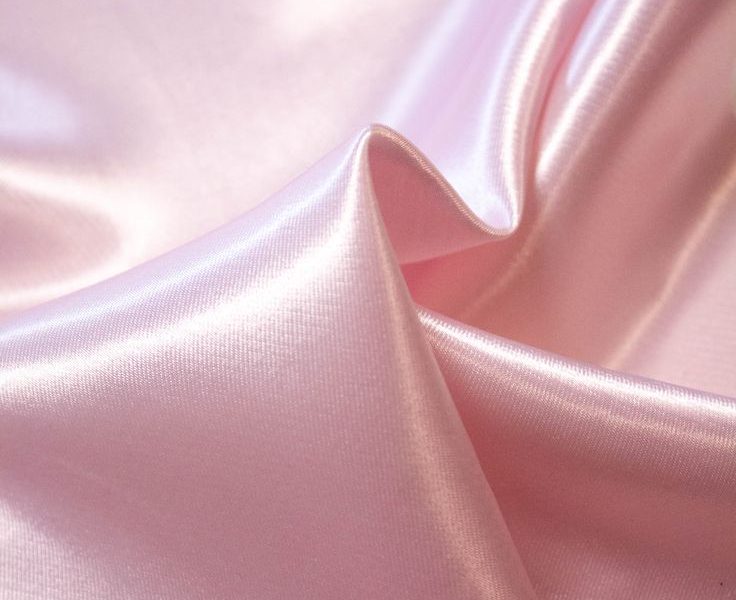Satin fabric, with its smooth, lustrous surface and elegant drape, has captivated fashion enthusiasts for centuries. From flowing evening gowns to luxurious lingerie, satin adds a touch of sophistication and glamour to any garment. But beyond its undeniable beauty, satin offers a surprising versatility that extends beyond formal wear. This comprehensive guide delves into the world of satin fabric, exploring its history, characteristics, types, and a multitude of uses to inspire your next sewing project or shopping spree.
A Timeless Legacy: The History of Satin Fabric
The origins of satin remain shrouded in mystery, with some attributing its invention to China as early as the 12th century. Regardless of its birthplace, satin quickly gained popularity for its luxurious feel and shimmering appearance. Early satin fabrics were crafted from silk, a precious commodity that made satin garments a symbol of wealth and status.

As weaving techniques evolved, satin production spread westward, reaching Europe by the Middle Ages. Here, satin became a favorite among royalty and nobility, adorning elaborate gowns, capes, and furnishings. The Industrial Revolution ushered in the mass production of satin, making it more accessible to a wider audience. Today, satin comes in various fibers, including silk, polyester, and nylon, ensuring there’s a perfect satin option for every budget and project.
Unveiling the Secrets: The Characteristics of Satin Fabric
Satin’s unique characteristics stem from its distinct weaving technique. Unlike plain weave fabrics where threads alternate vertically and horizontally, satin utilizes a series of long floats, which are weft (horizontal) or warp (vertical) threads that pass over several undetectable yarns. These floats create a smooth, uninterrupted surface on one side of the fabric, known as the face, while the back has a matte finish.
The type of float used determines the specific type of satin weave. Common satin weaves include:
- Satin weave: The most common type, offering a balanced drape and sheen.
- Satin faced weave: Features a lustrous face with a duller back.
- Double satin weave: Boasts a luxurious sheen on both sides.
Satin’s characteristics extend beyond its visual appeal. Here are some additional properties to consider:
- Drape: Satin’s fluidity allows for beautiful, cascading drapes, making it ideal for flowing gowns, skirts, and lingerie.
- Weight: Satin comes in various weights, from lightweight and sheer to heavier and more structured options.
- Care: Satin care requirements vary depending on the fiber content. Silk satin requires delicate handling, while synthetic satins are generally easier to care for.
A World of Choice: The Different Types of Satin Fabric
The world of satin extends beyond a single type. Here’s a closer look at some popular satin variations:

- Silk Satin: The quintessential satin, renowned for its luxurious drape, soft feel, and unmatched luster.
- Duchess Satin: A heavyweight satin with a structured drape, perfect for formal wear and structured garments.
- Charmeuse Satin: A lightweight and fluid satin with a beautiful drape, ideal for lingerie, blouses, and evening wear.
- Satin Faced Sateen: A cotton-based satin with a slightly textured surface, often used for bed sheets and pillowcases.
- Messaline Satin: A lightweight and slightly crinkled satin with a soft drape, popular for blouses and dresses.
When choosing satin, consider the weight, drape, and care requirements to ensure it suits your project and lifestyle.
Beyond the Ballgown: Exploring the Versatility of Satin Fabric
Satin’s applications extend far beyond the realm of formal wear. Here are some inspiring ways to incorporate satin into your wardrobe and home:
- Apparel: From elegant dresses, blouses, and skirts to luxurious lingerie and sleepwear, satin adds a touch of sophistication to any outfit.
- Accessories: Satin sashes, scarves, and hair accessories elevate even the simplest ensemble.
- Shoes: Satin pumps and sandals add a touch of glamour to your footwear collection.
- Home Decor: Satin throw pillows, tablecloths, and curtains add a touch of luxury to your living space.
- Upholstery: Satin upholstery creates a statement piece on furniture, though due to its delicate nature, it’s best suited for low-traffic areas.
Explore combining satin with other fabrics for a unique and visually interesting look.
Sewing with Satin: Mastering the Art (and Avoiding the Snags)
Satin’s beauty is undeniable, but its smooth surface can present challenges for sewers. Here are some tips to ensure a successful and frustration-free sewing experience with satin:

- Choosing the Right Needle: Opt for a sharp, microtex needle with a small eye to prevent snags and puckering.
- Sharp Scissors: Dull scissors will fray satin easily. Invest in a good pair of sharp fabric shears.
- Fabric Preparation: Preshrink your satin fabric before sewing to avoid shrinkage after the garment is finished.
- Sewing Techniques: Use shorter stitch lengths and walking feet to prevent the fabric from shifting and puckering.
- Marking Tools: Instead of pins, use fabric marking pens or water-soluble markers to avoid leaving holes in the delicate fabric.
- Ironing with Caution: Iron satin on the wrong side and at a low heat setting with a silk press cloth to prevent scorching.
Practice makes perfect! If you’re new to sewing satin, experiment with scraps before tackling a larger project.
Satin Care: Maintaining the Luxurious Look
Satin requires proper care to preserve its beauty and longevity. Here are some essential tips for caring for your satin garments and home decor:

- Washing: Check the care label first. Delicate satins, especially silk, are best dry-cleaned. Machine-washable satins should be washed on a gentle cycle in cold water with a mild detergent.
- Drying: Avoid using a dryer. Instead, hang your satin garments or lay them flat to air dry.
- Ironing: Iron on a low heat setting with a silk press cloth to prevent scorching.
- Storage: Store satin garments in a cool, dry place away from direct sunlight. Use padded hangers to prevent wrinkles.
By following these simple care tips, you can ensure your satin pieces retain their luxurious look for years to come.
Where to Buy Satin Fabric: A Shopper’s Guide
With a plethora of satin options available, finding the perfect type for your project can feel overwhelming. Here are some resources to guide your satin shopping spree:

- Fabric Stores: Local fabric stores often have a good selection of satin fabrics in various weights, colors, and fibers.
- Online Retailers: Numerous online retailers offer a vast selection of satin fabrics at competitive prices. Be sure to read reviews and compare prices before making a purchase.
- Discount Fabric Stores: Discount fabric stores can be a great place to find affordable satin remnants or discounted bolts, perfect for smaller projects.
When shopping for satin online, pay close attention to the fabric descriptions and order swatches if possible to ensure you’re getting the exact type of satin you need.
Embrace the Luxurious World of Satin: A Final Touch
Satin fabric offers a timeless elegance and versatility that can elevate your wardrobe and home decor. From its rich history to its diverse applications, satin continues to captivate those who appreciate a touch of luxury. Now that you’re armed with the knowledge and inspiration to explore the world of satin, unleash your creativity and embrace its undeniable allure!




